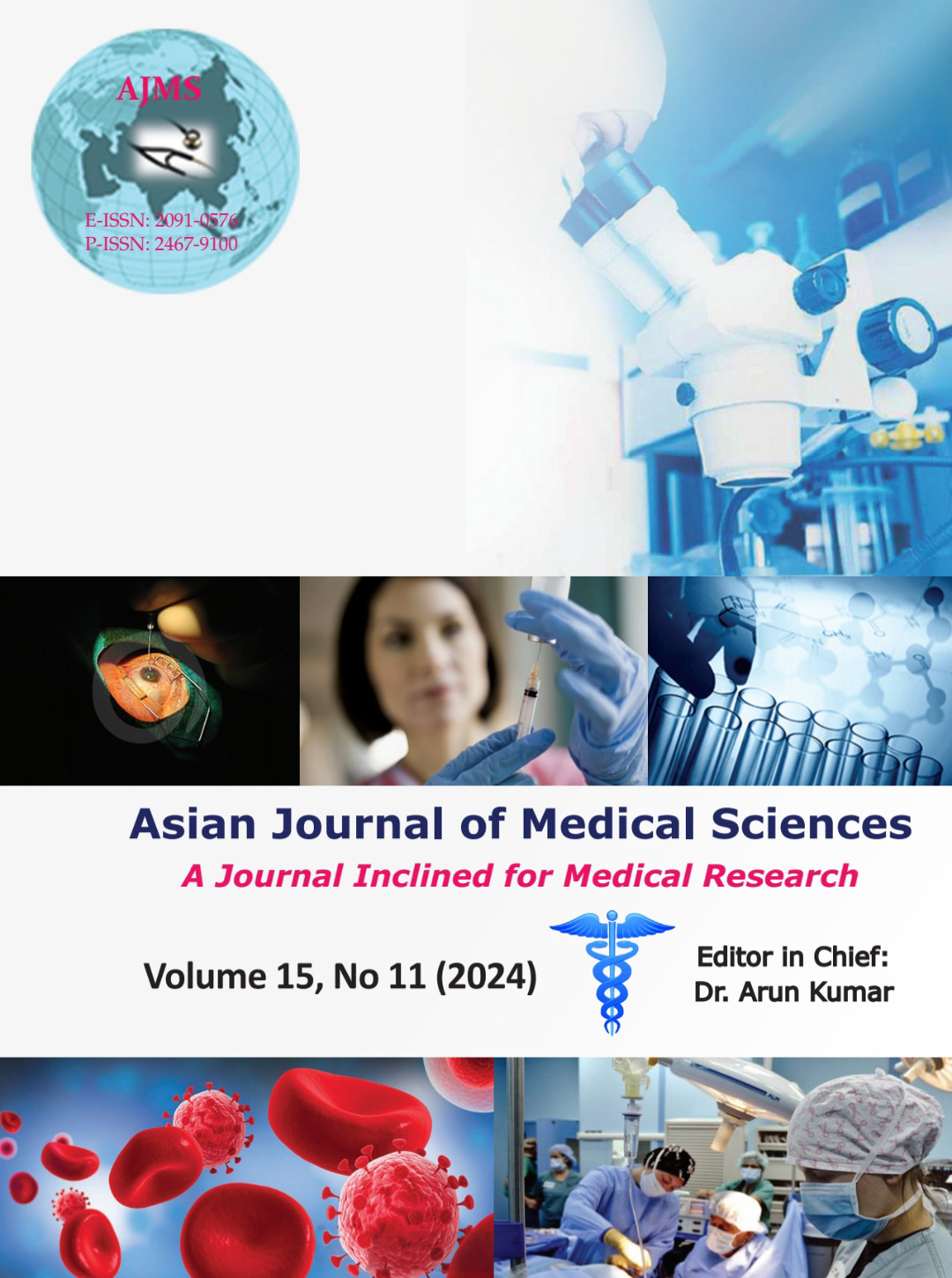Rare microorganisms in blood culture samples from intensive care unit patients in a tertiary care hospital in Eastern India – A dangerous threat
Keywords:
Sepsis; Vitek2; BD BACTECTM; Fx40; Biomarkers; Intensive care unitAbstract
Background: Sepsis is a potentially life-threatening condition with significant mortality and morbidity. An estimated 48.9 million cases and 11 million deaths occur due to sepsis worldwide. The gold standard for the diagnosis of suspected sepsis patients is blood culture.
Aims and Objectives: The aims and objectives of the study are to evaluate the growth of rare microorganisms in blood cultures of intensive care unit (ICU) patients, to determine their antimicrobial susceptibility patterns, and also to assess the associated risk factors in those patients.
Materials and Methods: This study was conducted for 1 year (August 2023–July 2024) in our department including blood culture samples from ICU patients and relatively rare microorganisms isolated were included in the study accounting for 40 cases. Blood specimens were cultured in automated BD BACTECTM Fx40 blood culture system and identification of microorganisms and their antimicrobial susceptibility pattern were detected by Vitek2 system.
Results: Female patients were more in number than male patients and patients of 0–20 years’ age group were most commonly affected. Staphylococcus hominis was most commonly isolated out of all rarely isolated microorganisms. The different parameters for the assessment of sepsis severity in our study were C-reactive protein (CRP), Neutrophil count, D-dimer, Procalcitonin, and quick sequential organ failure assessment (qSOFA) score. Out of all, CRP was most commonly raised among sepsis patients. The most common risk factor involved was prolonged ICU stay.
Conclusion: Appropriate collection and processing of blood culture samples can reduce sepsis-related morbidity and mortality manifold. Combination of biomarkers study and qSOFA scoring system can improve diagnosis and monitoring of sepsis patients.
Downloads
Downloads
Published
How to Cite
Issue
Section
License
Copyright (c) 2024 Asian Journal of Medical Sciences

This work is licensed under a Creative Commons Attribution-NonCommercial 4.0 International License.
Authors who publish with this journal agree to the following terms:
- The journal holds copyright and publishes the work under a Creative Commons CC-BY-NC license that permits use, distribution and reprduction in any medium, provided the original work is properly cited and is not used for commercial purposes. The journal should be recognised as the original publisher of this work.
- Authors are able to enter into separate, additional contractual arrangements for the non-exclusive distribution of the journal's published version of the work (e.g., post it to an institutional repository or publish it in a book), with an acknowledgement of its initial publication in this journal.
- Authors are permitted and encouraged to post their work online (e.g., in institutional repositories or on their website) prior to and during the submission process, as it can lead to productive exchanges, as well as earlier and greater citation of published work (See The Effect of Open Access).




